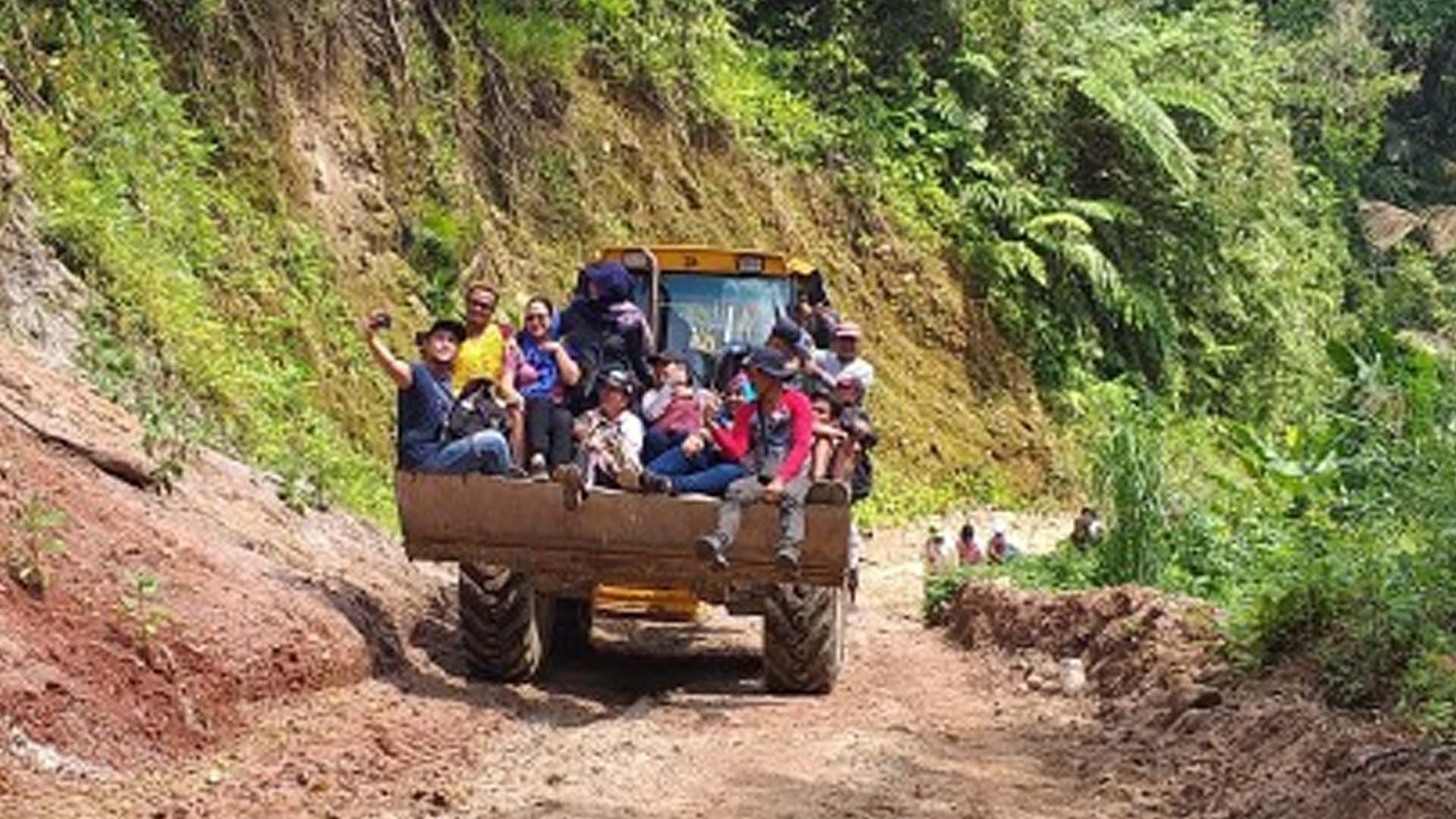The development efforts of the provincial government in the upland village of Kagbana come as a big relief to abaca farmers who have been suffering the brunt of a decade-long disease infestation.
Resident Reyniel de Paz, 32, said the ongoing road project and the recently completed hanging bridge funded by the local government are very helpful in bringing the abaca farmers’ products to traders in San Vicente village, which is 8 km. away from their community.
Carrying the abaca fiber to traders needs extra caution when farmers cross the chest-deep river to keep their products dry.
“Before, we had to cross the river to bring our products to San Vicente. Some suffered swollen legs due to long hikes while carrying the 40 (kg.) to 60 kg. of abaca like a huge backpack,” de Paz, a farmer for the past 15 years, told the Philippine News Agency (PNA) on Friday.
A kilogram of abaca is traded at PHP52 in Kagbana village but is worth PHP57 in San Vicente village.
The income from abaca is way higher than coconut farming. The price of copra, a traditional by-product of coconut went down to PHP13 per kg. in the past three years.
Abaca fibers are extensively used in producing ropes, woven fabrics, and tea bags, among others. It is also called biodegradable and sustainable fiber.
It is considered the strongest of natural fibers, being three times stronger than sisal fiber, and is far more resistant to saltwater decomposition than most vegetable fibers.
De Paz, a father of 2, said only in the past 2 years have they seen the recovery of their abaca plantations after a decade-long infestation of destructive abaca mosaic and bunchy-top diseases.
“We are happy to see the ongoing road opening project. This motivates us to maintain and expand our abaca plantations,” he said. Poverty and distance from his school had prompted him to quit secondary school after two years.
Kagbana is one of the remotest villages in Leyte province. It is 40 km. away from the town center of Burauen. To get there, one has to take a one-hour motorcycle ride and a two-hour hike. The village has nearly 300 residents, including 50 Mamanwa tribe members.
Leyte’s provincial government has already spent PHP30 million to open the access road to the village. Another PHP20 million is on the pipeline for the road opening and concreting this year.
On top of this, multi-million funds have been set aside for the road construction under the Payapa at Masaganang Pamayanan (PAMANA) program of the Office of the Presidential Adviser on the Peace Process.
Even with the pending completion of the road project, residents seem satisfied knowing that they don’t have to cross the chest-deep water of Marabong River. This, after the September inauguration of the PHP5.63 million hanging bridge funded by the provincial government that would assure safe passage for residents of remote Kagbana village during bad weather.
During the rainy season, the village used to be completely isolated.
Marilyn Gloria, 28, a community store owner shared that since the hanging bridge was built and some portion of the road has become accessible to motorcycles this year, the cost of hauling products has significantly decreased.
From PHP350 to PHP400 pay for every hauler of goods from Lanawan village, she now spends only PHP150.
“The road and hanging bridge help my small business a lot. I have higher income now because the transportation cost has been reduced,” Gloria said.
For her, the bridge and the road will not just benefit farmers and store owners, but also children who want to continue studying after completing their elementary education. The nearest secondary school is about 40 km. away from the village.
“This means a lot to our children. What we failed to obtain when we were young, these can be achieved by our children. We know how important education is,” she added.
Mary Jane Amat, a public school teacher assigned to Kagbana, said children would be encouraged to pursue secondary and even college education because they don’t have to cross the chest-deep river.
“When I studied high school and tertiary education, I just came home once a month because it was so inconvenient to get here. We had to walk for three to four hours across mountains and rivers,” Amat said.
Kagbana village used to be a hotbed of the New People’s Army, considering its strategic location near the mountains of Baybay City and Ormoc City.
Amat’s father, Ponciano, who served as village chief for decades until 2007, was killed by a group of eight NPA fighters in 2009 on suspicion of being a part of the military intelligence network.
The NPA was last sighted in Kagbana in 2017.
The military established a detachment in the village in 2018. Since then, the improved peace and order situation has allowed national and local government workers to implement development projects in the area. (PNA)







